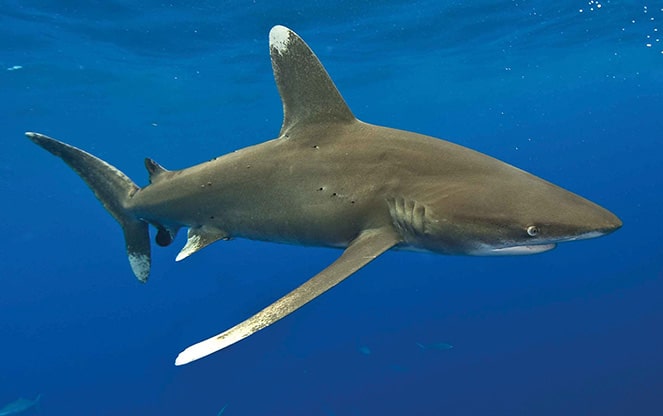Sharks
Selachimorpha
These large fish are considered one of the largest predators in the sea. Their skeleton is made of cartilage, making them light and flexible. They are fast and agile swimmers, able to hunt efficiently and effectively.
There are several species of sharks with different characteristics. There are small sharks, such as the dwarf lantern shark with a length of about 17cm, and other large sharks, such as the whale shark, which can reach up to 12m.
Types of sharks you will find at Loro Parque
- Grey shark
Carcharhinus plumbeus - Nurse shark
Ginglymostoma cirratum - Zebra shark
Stegostoma tigrinum - Brownbanded bamboo shark
Chiloscyllium punctatum
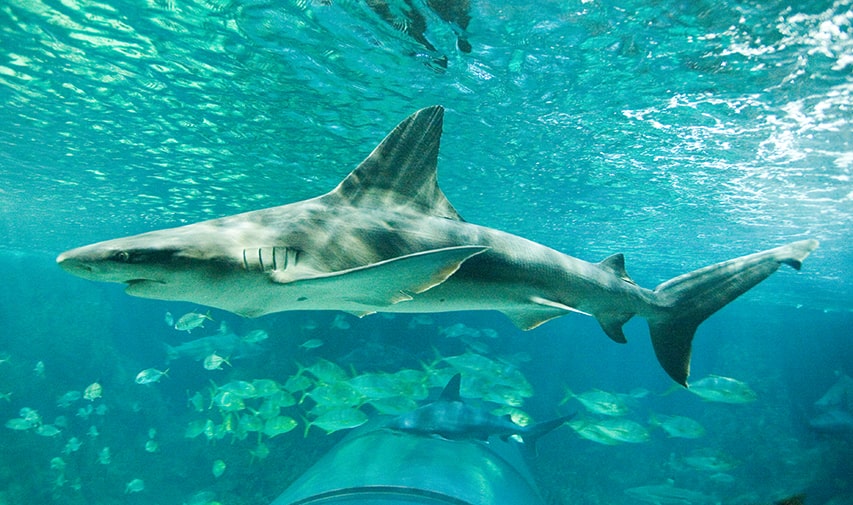
Grey shark
Carcharhinus plumbeus
It is one of the most common sharks in the Pacific Ocean. It owes its name to its skin being mostly grey, except for the lower part, which is white. They are active during the day, but even more so at night.
Their size is around 2.5m.

WEIGHT
50 kg

DIET
Fish, squid, octopus, and crustaceans

ORIGIN
Pacific Ocean

GESTATION
8 – 12 months
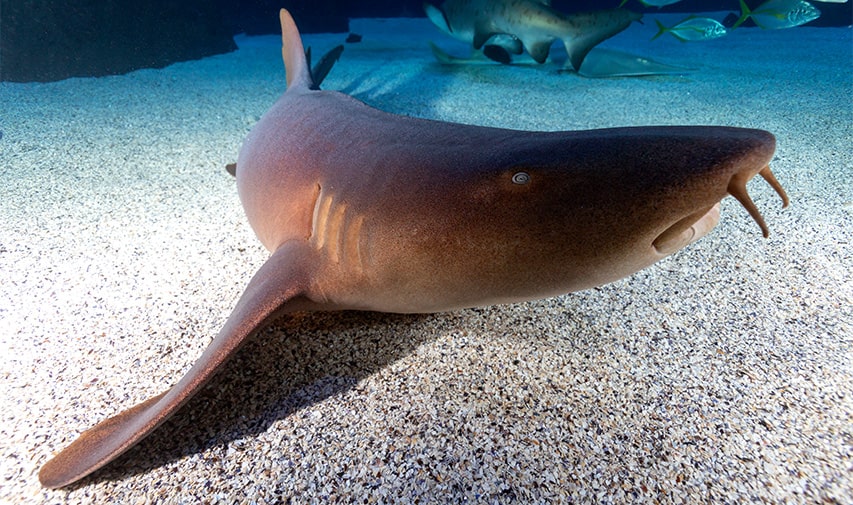
Nurse shark
Ginglymostoma cirratum
Nurse sharks inhabit the seabed at an average depth of around 200m. They usually spend the day resting on the seabed or in caves. It is most active at night.
It is characterised by its small mouth, through which it sucks in its prey and then crushes it with its jaws.

WEIGHT
60 kg

DIET
Molluscs, crustaceans, and sea cucumbers

ORIGIN
Tropical and temperate waters

GESTATION
6 months
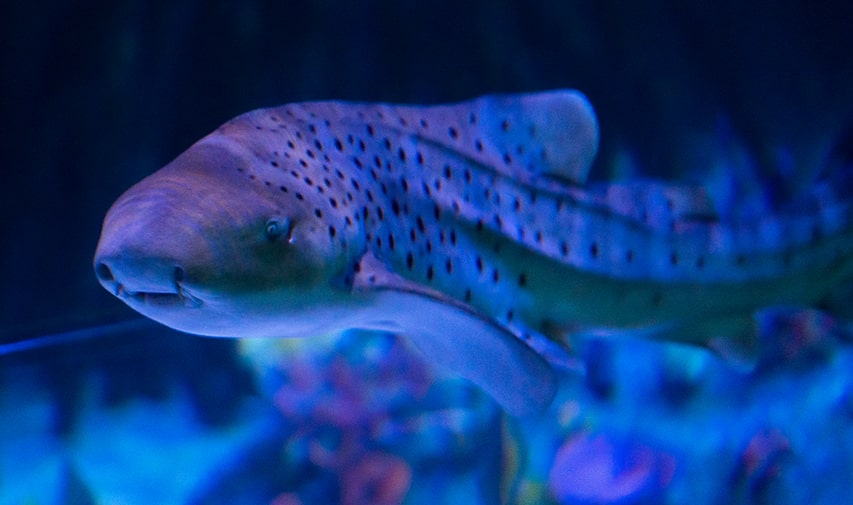
Zebra shark
Stegostoma tigrinum
Zebra sharks spend most of their day resting on the seabed. They become active as night falls. They are usually solitary creatures but during mating season, they gather in large groups.
This type of shark is harmless to humans.

WEIGHT
30 kg

DIET
Fish, crabs, molluscs and shrimps

ORIGIN
Tropical waters

GESTATION
9 – 12 meses
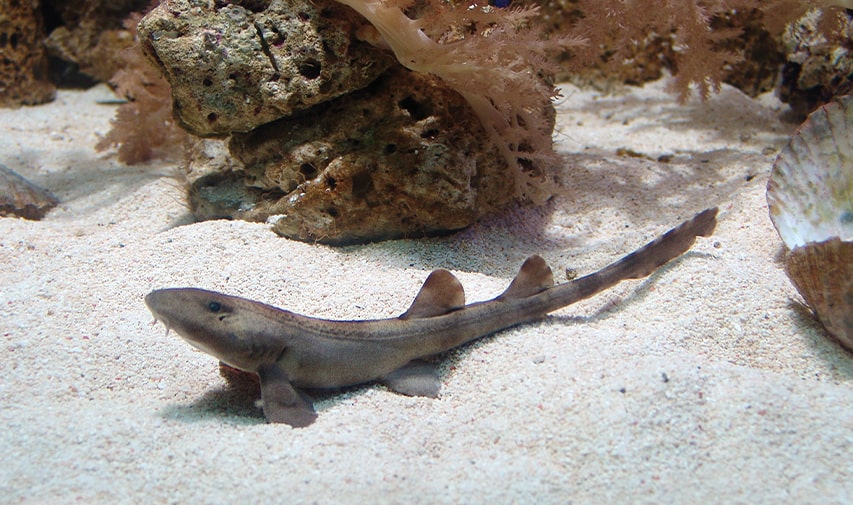
Brownbanded bamboo shark
Chiloscyllium punctatum
The bamboo shark is characterised by its black and white striped body. In its mouth are whiskers reminiscent of catfish. It is one of the smallest shark species, usually less than a metre in size.
Its most common habitat is coastal coral reefs and sandy and muddy seabed.

WEIGHT
–

DIET
Small fish, crustaceans and polychaete worms

ORIGIN
Indo-Pacific waters

GESTATION
120 – 130 days
Interesting facts about sharks
The ancestors of today’s sharks lived alongside dinosaurs. There are shark remains from more than 450 million years ago.
At the end of its life, a shark may have had more than 20,000 teeth.
To quickly differentiate them from cetaceans, just look at their vertical tail.
They are able to detect their prey by sensing their electrical field. They do so through the ampullae of Lorenzini.
How we help the conservation of sharks and other marine animals
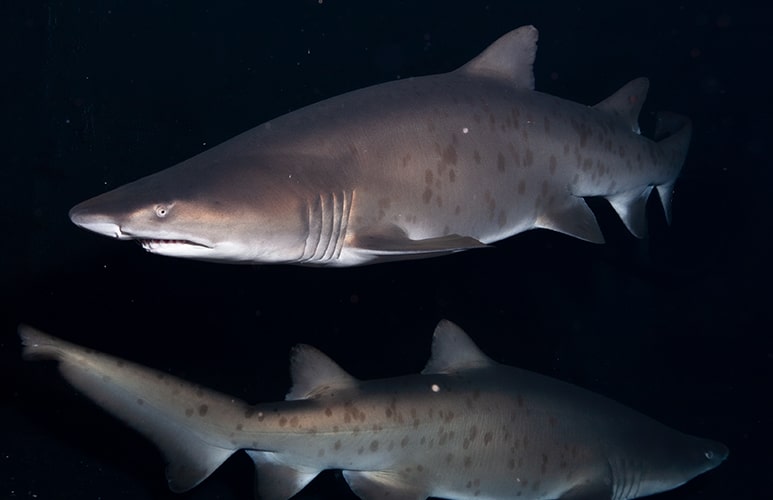
Shark populations around the world are being impacted by overfishing. Many shark species are in danger of extinction, such as zebra sharks.
At Loro Parque we promote reproduction under human care. A process that significantly increases the survival rate of the offspring and ensures the conservation of seriously endangered species.
At Loro Parque we collaborate with institutions and research centres to increase the reproduction and knowledge of the sharks. This results in the improvement of the conservation capacity in wild habitats.
Another way in which we support the conservation of sharks and their habitats is through Loro Parque Fundación. With financial support for projects related to populations of angelsharks and hammerhead sharks in the Canary Islands.

